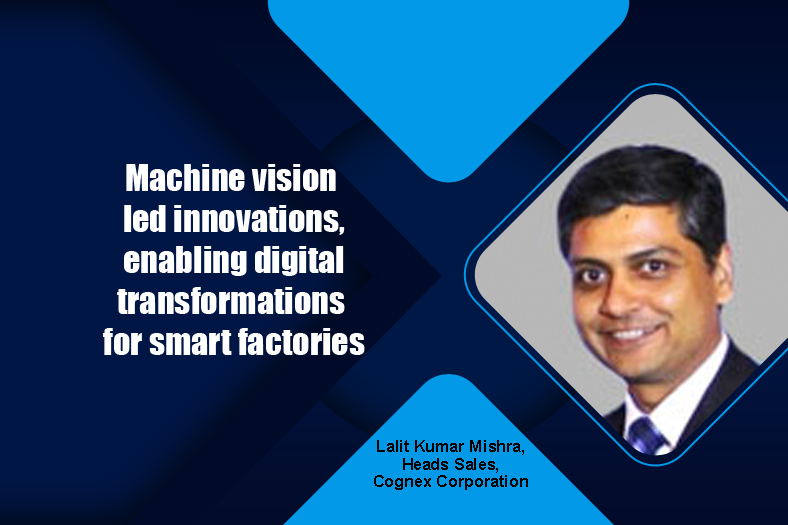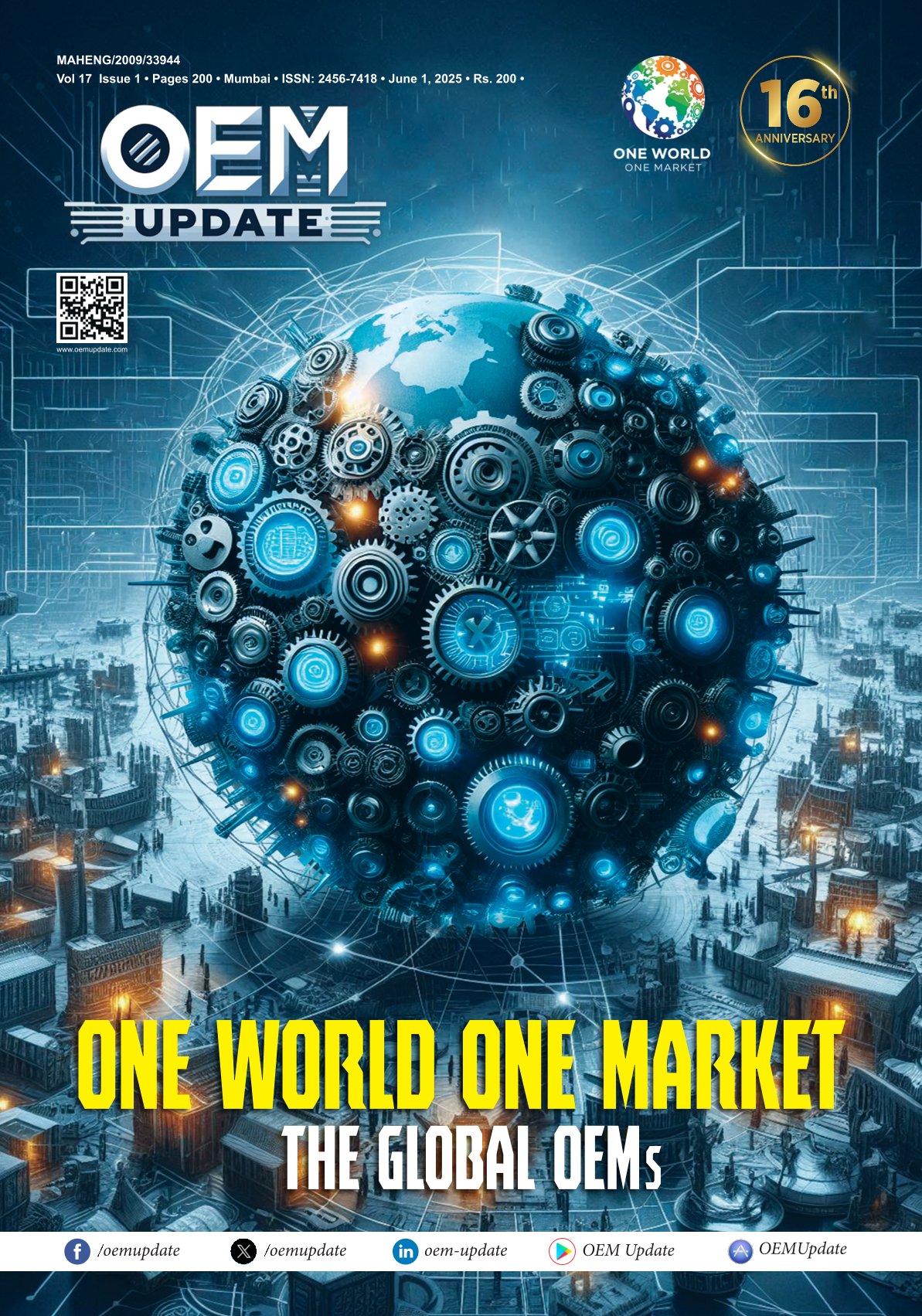Machine vision led innovations, enabling digital transformations for smart factories
By OEM Update Editorial November 1, 2021 3:32 pm IST
“We are connecting our business systems to allow customers to easily access and analyse data on the factory floor in real time.”
Key requirements across traceability in the entire value chain.
So, I just moved on from Tata group into Cognex, a little less than a month ago. Cognex is a leader in the industry of machine vision. And we have been in this business for about 40 years, we have over 25,000 Customers and generated over 800 million plus of revenue last year. With about 2100 employees worldwide, in about 60 offices, we have about 400 distributed partners, and we have shipped over 3 million systems worldwide, we operate in a very niche segment of machine vision analytics, as we call it.
Machine vision led innovations
So what is machine vision really? It is a technology that gives computers and automation equipment, the ability to be able to see, right? It operates much like how our vision does, you know, our eye is a sophisticated optical device, it captures information and sends it to our brain, which makes sense of it. And in machine vision, a camera lights, and a lens captures data, which is then sent to a processor, where vision tools, or let’s say algorithms sort of interpret it and make sense out of it, right!
Vision is a very complicated function, which is made increasingly difficult by changes in our environment, changing light movement, the angle at which we see objects, colour, reflection, etc., and vision is difficult to replicate. An automation, you would sort of assume, especially with the accuracy levels, where we have to be as accurate as let’s say, 99.9 percent.
At Cognex, we apply machine vision to some of the most difficult in line applications performed by the world’s most sophisticated manufacturers of discrete products. Technology is used to help customers in typically four general areas, which is guiding. The process of guiding, the process of identification, the process of gauging and the process of inspecting. And one of the things I wanted to touch upon was, the most cost effective IoT innovations that we expect in future to automate the process from origin to manufacturing,to the end user in its entirety really, right? So there are many innovations happening.Currently organisations are testing and piloting a lot of use cases and carefully selecting you know, the ones which make sense for them to go on a scale and bring sustainable returns on investments. The Digital Officers across the industries are mandated to find innovative ways to bring cost efficiency and blushing effectiveness in the entire value chain as I see it close to the manufacturing industry. I see a lot of work has been done as I as I say in three M’s and I mean man, machine and material.
So, on the human side, which is human beings, there are a lot of tracking and tracing solutions that are being deployed in large factory campuses. In fact, I led one of the very large engagements for one of the biggest, you know, steel manufacturing companies of global repute, where we deployed, you know, human tracing and tracking solutions, more from the process of safety of those people less from the process of sort of tracking them. By the way, that was also the by-product. And this is where we were actually collecting data.
And on machine and material, obviously, we are seeing constant, increasing, you know, demand for collecting data at every toll gate, and then trying to make sense of it for faster business decision making enabling production lines to churn. Even faster are far more predictable. And this is where Cognex plays a very critical role. At Cognex, we apply machine vision to some of the most difficult inline applications performed by the world’s most sophisticated infectious devices as I call them.
Cognex vision is used to guide equipment, such as, for example, aligning a screen on a mobile phone, in the mobile phone manufacturing process, or guiding a robot to put a windshield on a car. Second is identification. So we read alphanumeric codes and barcodes in production, we specialise in reading the most difficult to read barcodes at the highest speed and accuracy. The barcodes that we alone can read might be behind shrink-wrap or on a pallet, you know, they might be damaged. Or they might be laser etched codes on metal parts where reflection is a real challenge.
We have a very high rate, high read-read barcodes and more challenging applications than any other company in the world.
Cookie Consent
We use cookies to personalize your experience. By continuing to visit this website you agree to our Terms & Conditions, Privacy Policy and Cookie Policy.















